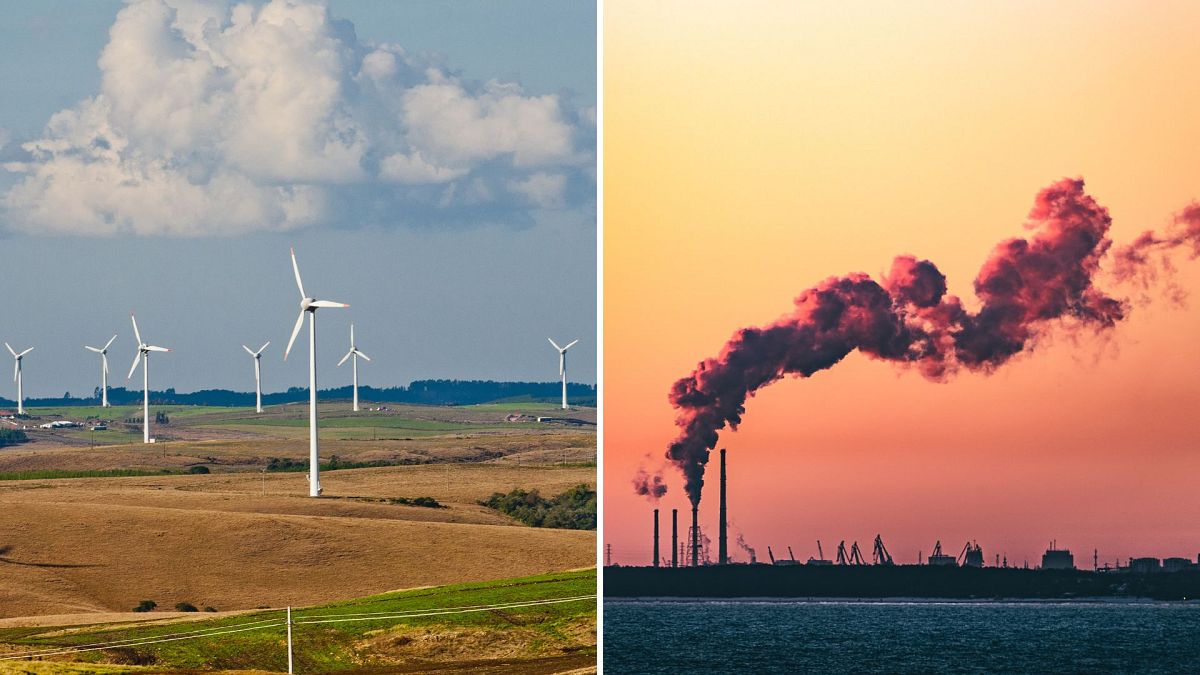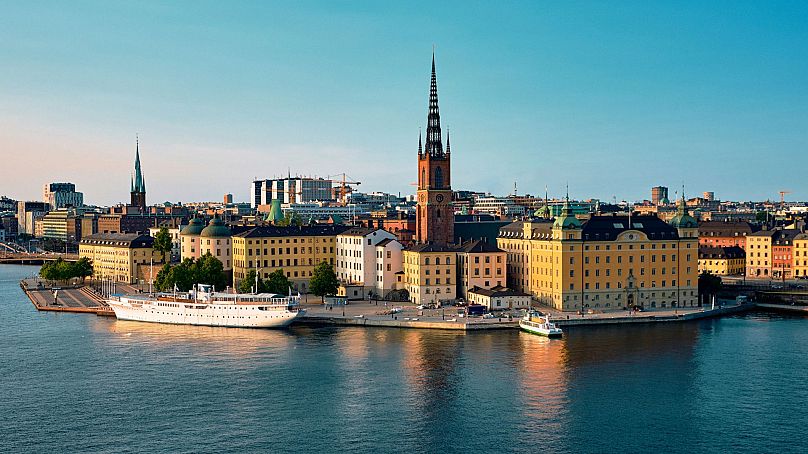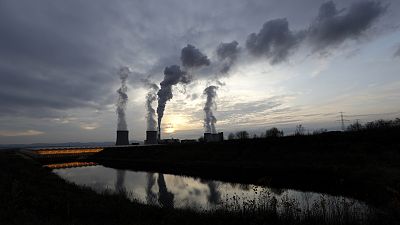Sweden set a record for wind energy in February. Why is a climate report warning it’s ‘going backwards?’
More than a quarter of Sweden’s electricity has come from wind power for two consecutive months - but a new report has warned that the country's emissions could soon rise.
Sweden generated a record 27 per cent of electricity from wind in February, narrowly beating a 26 per cent record set in January this year.
According to an analysis by energy think tank Ember - this is the highest-ever share of wind power generation in the country.
The milestone comes after years of investment in renewables - a push that is “paying off,” says Nicolas Fulghum, Energy and Climate Data Analyst at Ember.
“Higher wind generation makes Sweden’s grid more resilient against droughts, and protects consumers from high costs,” he says.
“With policy ambition high to expand wind power further, Sweden is set for further benefits to costs, security and climate.”
However, the country is also set to increase its greenhouse gas emissions, according to an annual assessment report by the Swedish Climate Policy Council.
“Instead of rapidly reducing emissions, the changes decided and announced so far will, on the contrary, according to the government’s own assessment, increase emissions in the near future,” the report states.
How has Sweden set a new record for wind power generation?
Sweden has ambitious clean energy targets and is aiming to reach 100 per cent renewable electricity production by 2040. By 2045, the country aims to have no net greenhouse emissions. These were set under the Social Democratic government, which was replaced in November by a centre-right three party alliance.
To achieve these goals, Sweden has been pouring money into clean energy. Since 2018, its wind capacity has doubled and the country now boasts nearly 5,000 turbines.
These generated around 4 terawatts of energy in February - 27 per cent of the country’s electricity demand.
In 2022, Sweden installed 2.4 GW of wind power capacity. Only Germany installed more, at around 2.5 GW. A gigawatt can power around 750,000 homes.
“With policy ambition high to expand wind power further, Sweden is set for further benefits to costs, security and climate,” Fulghum says.
“Other European countries could see the same if they follow suit.”
How do other EU countries compare to Sweden on wind power?
Global greenhouse gas emissions reached 58 billion tonnes in 2022 - a record high. But renewables have the potential to slash this worrying total.
Wind energy produces just 0.02 per cent of the CO2 emissions per unit of energy when compared to coal.
As global energy prices continue to surge - fuelled by Russia’s invasion of Ukraine - building clean energy capacity is increasingly urgent.
Wind power is a particularly good option, as it’s not threatened by drought in the way that hydropower is.
But many European countries are lagging behind.
In 2021, the EU deployed 34 GW of wind and solar capacity combined. According to Ember’s analysis, yearly additions will need to increase if climate targets are to remain within reach. The bloc will need to have a total of 76 GW by 2026 to keep global heating within 1.5 degrees Celsius.
At predicted rates of deployment, only four out of 27 EU countries (Finland, Croatia, Lithuania and Sweden) will achieve sufficiently high annual increases in wind capacity increases to meet this goal.
Why is Sweden being criticised for rising emissions?
Despite its successes in wind power generation, Sweden has a way to go on climate.
The new centre-right coalition government is not ambitious on climate, claimed Cecilia Hermansson chair of Sweden's Climate Policy Council at the launch of a new report.
“We have lost momentum and are going to be steering in the wrong direction if policies are not changed,” she warned.
“The policies which have been presented so far are not enough to reach the 2030 goal. The changes to policies which have been announced are projected to even increase greenhouse gas emissions in the short term.”
If emissions do increase, it will mark the first time in two decades that they have risen in the Scandinavian country.




